Andy Warhol is one of the most recognisable artists in the world. His influence in the pop art movement of the 1960s is seen as a groundbreaking moment in art history. His famous Marilyn Monroe diptych and series of Campbell soup tins have been reproduced millions of times in various mediums. These iconic artworks celebrate and encourage commentary of American celebrity and consumer culture.
Many of Warhol’s original pieces were created with a screen printing method and common reproductions are more often giclee prints on paper. Whilst original screen prints will fetch phenomenal amounts at auction, reproductions and works on paper may also have significant value. Paper can be a vulnerable medium if not cared for and original screen prints may present unique challenges due to the use of paint or ink.
What is a screenprint?
Screen printing is an ancient practice which was popularised in the 1960s by pop artists such as Warhol and Lichtenstein. Screen printing may also be referred to as silkscreen printing or serigraphy.
The practice requires a fine mesh stretched over a frame, beneath a stencil overlays the paper or canvas. Ink or paint is run along a far end and then a blade or squeegee pushes it evenly over the mesh. A well-trained hand is required to maintain the correct pressure and speed, giving a smooth and well-defined result.
The finished print is often a bold outline, which can be overlaid with various shapes and colours to form an abstract or figurative artwork. In Warhol’s studio a team of creatives worked alongside him, including Michel Caza who was the master screen printer.
 Above: an example of Andy Warhol’s repeated screenprints of Marilyn Monroe
Above: an example of Andy Warhol’s repeated screenprints of Marilyn Monroe
How to protect and display Andy Warhol prints
Whether the Warhol artwork is an original screen print or later reproduction, it should be displayed with caution. An understanding of the environmental issues facing prints is key in reducing the risks and maintaining the value and visual integrity.
Sunlight
Ultra-violet rays from sunlight can cause dramatic fading to certain pigments in paint or ink, it may also cause any uncovered base to become brittle. Once a colour has faded, the ethics of conservation would prevent a conservator from reinstating large areas. Instead, this type of deterioration should be prevented by the owner through specialist care. Firstly, the piece should be kept in a shaded location with low light levels for the majority of the day. Secondly, UV protection should be considered both on the frame and on any nearby windows. Our team offers conservation grade framing options which can be of museum standard, this will give up to 99% protection from sunlight. However, for the overall safety of the piece, it should always be kept in a shaded location whether or not there is UV protection in place.
Framing
During framing, check that non-acidic materials are used. Adhesives, mounts, and backing boards with a high PH level can cause discolouration and decay over time. If the piece is in an old frame, this should be assessed for dangerous elements.
The inks from a screenprint may be at risk of sticking to the glass, so ensure that the piece is kept back with a suitable mount. This should also be flexible, as the paper may break or become brittle if it is held down under tight pressure.
Atmosphere
Humidity can severely affect a paper artwork or print, causing it to become unstable as the medium absorbs and loses moisture. Whilst a dry atmosphere can cause brittle, flaking elements, high humidity can encourage mould growth and foxing, this is the occurrence of rusty or dark brown spots which can worsen over time. The ink on a screen print may also become powdery or begin to flake due to a shifting surface. Even humidity and temperature will lessen the chances of damage being created, it is recommended that paper is kept at 35-50% humidity at 20 degrees celsius.
 Above: Andy Warhol prints on display with direct sunlight, these require UV protective glass to prevent fading
Above: Andy Warhol prints on display with direct sunlight, these require UV protective glass to prevent fading
Accidents
Accidental damage may occur to a Warhol print through staining, household incidents, or falling against sharp objects. To prevent accidents, it is recommended that a piece is professionally framed with a secure glass barrier and securely installed with appropriate hanging techniques. During transit or storage, it should be kept within a frame and never rolled or folded. The storage environment should have the same control as the display mentioned above.
During social events or in busy areas, it is recommended that the piece is hung above shoulder height or given a clear distance from crowds or beverages. It should also be kept away from bathrooms and kitchens to control humidity. If a piece becomes stained or water damaged, contact a conservator as soon as possible for quick intervention, as the sooner this is dealt with professionally, the less the damage and cost will be.
If a piece becomes torn, dented, or the ink is flaking and unstable, keep the piece as flat as possible and gather any loose pieces. Once a piece is torn, it will continue to deteriorate, so it is also recommended to act fast and speak to our team when faced with this sort of damage.
The value of Warhol artworks
- Some of the most valuable Warhol screen prints are on a silver base, including ‘Car Crash: Double Disaster’ which sold for £66 million in 2013 and ‘Triple Elvis’ for £51 million in 2014.
- Warhol artworks should be checked and listed by the Andy Warhol Art Authentication Board, Inc. They may also be numbered by Feldman and Schellmann.
- Warhol created 209 ‘Mao’ portraits, their sale prices have been between £10-£31 million. In 2012 these artworks were banned from an exhibition in China.
- Paying homage to old master artworks, Warhol’s ‘Sixty Last Suppers’ sold for £46 million, whilst his ‘Coloured Mona Lisa’ sold for £35 million.
- Warhol’s disaster series repeats a shocking image over and over again until the viewer becomes numb to it. These prints have been very popular at auction, with ‘Green Car Crash’ selling for £36 million in 2007.
 Above: a large Andy Warhol screenprint of Chairman Mao on display in a gallery
Above: a large Andy Warhol screenprint of Chairman Mao on display in a gallery
Can you restore Andy Warhol prints?
Our ICON accredited paper conservator is experienced with Warhol prints, whilst our easel painting conservators can help to protect any pieces which are on canvas or have mixed media elements. It is possible to restore Warhol screen prints, posters, lithographs, and giclee prints, as well as many other forms which his artwork may take.
A discoloured Warhol print, whether this is through accidental spills, old framing, foxing, or mould growth, can be gently washed by our conservator. The solution is tested and tailored to the specific artwork, so ensure that the paper is cleaned and the original details remain intact. This will eradicate mould spores and foxing and help in preventing their return.
Tears to paper can be carefully pieced back together, as can brittle areas which have begun to flake away. Dented or warped paper can also be flattened with a weight treatment. These artworks can then be placed on specialist tissue paper to add durability and strength. Similarly, town canvas artworks can be restored thread by thread, often leaving a seamless result.
 Above: our ICON accredited paper conservator James working on a miniature watercolour
Above: our ICON accredited paper conservator James working on a miniature watercolour
Andy Warhol print restoration
A recent Warhol restoration by our team includes a print from the ‘Ladies And Gentlemen Announcement Cards’ project from 1975. These feature collages of colour surrounding a silk screen portrait. The drag queen models came from a club called ‘The Gilded Grape’ in New York and were paid $50 each to have a polaroid taken.
 Above: Warhol photographing Jack Ford and Bianca Jagger, 1975
Above: Warhol photographing Jack Ford and Bianca Jagger, 1975
For this series, Warhol photographed 14 subjects producing around 500 images. He then selected his favourites to create the artwork, in the same way he would for a celebrity feature. Until 2014 nobody knew the details of the portrait sitters, but research funded by the Warhol estate was able to produce biographies for 13 out of the 14 portraits. Recently, the price for prints related to this series has gone up, the popularity has been attributed to a revived interest in the 1970s and a growing enthusiasm for drag artists.
 Above: a close up of the dent in the Andy Warhol print before restoration by our paper conservator
Above: a close up of the dent in the Andy Warhol print before restoration by our paper conservator
The print had been damaged by a small tear in the upper left corner, which was causing a visual distraction as well as putting the rest of the piece at risk from the tear developing further. Our paper conservator treated the area with a gentle clean, followed by careful and precise realignment of the paper fibres. Finally, the work was given a new tissue lining to stabilise it further.
New framing options were also discussed. Following a portfolio of tailored choices, our client selected their preference and included the option of UV protective glass, as well as a cut out in the back to reveal the important signature.
 Above: a close up of the dent in the Andy Warhol print after restoration by our paper conservator
Above: a close up of the dent in the Andy Warhol print after restoration by our paper conservator
Contact our team for further information
If you have a Warhol artwork that you would like to be assessed, restored, or professionally framed, please contact our team for further guidance.
You can contact us via email [email protected] or telephone 0207 112 7576.

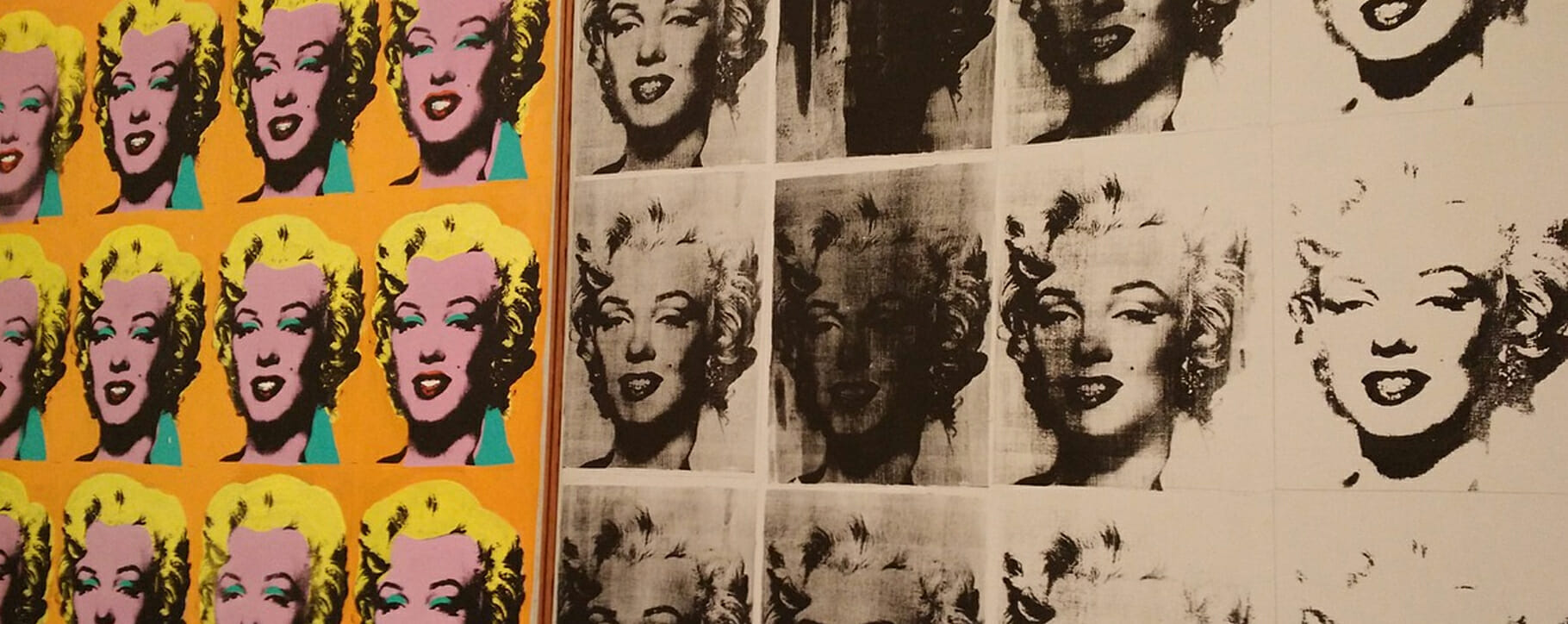
 Above: Andy Warhol prints on display with direct sunlight, these require UV protective glass to prevent fading
Above: Andy Warhol prints on display with direct sunlight, these require UV protective glass to prevent fading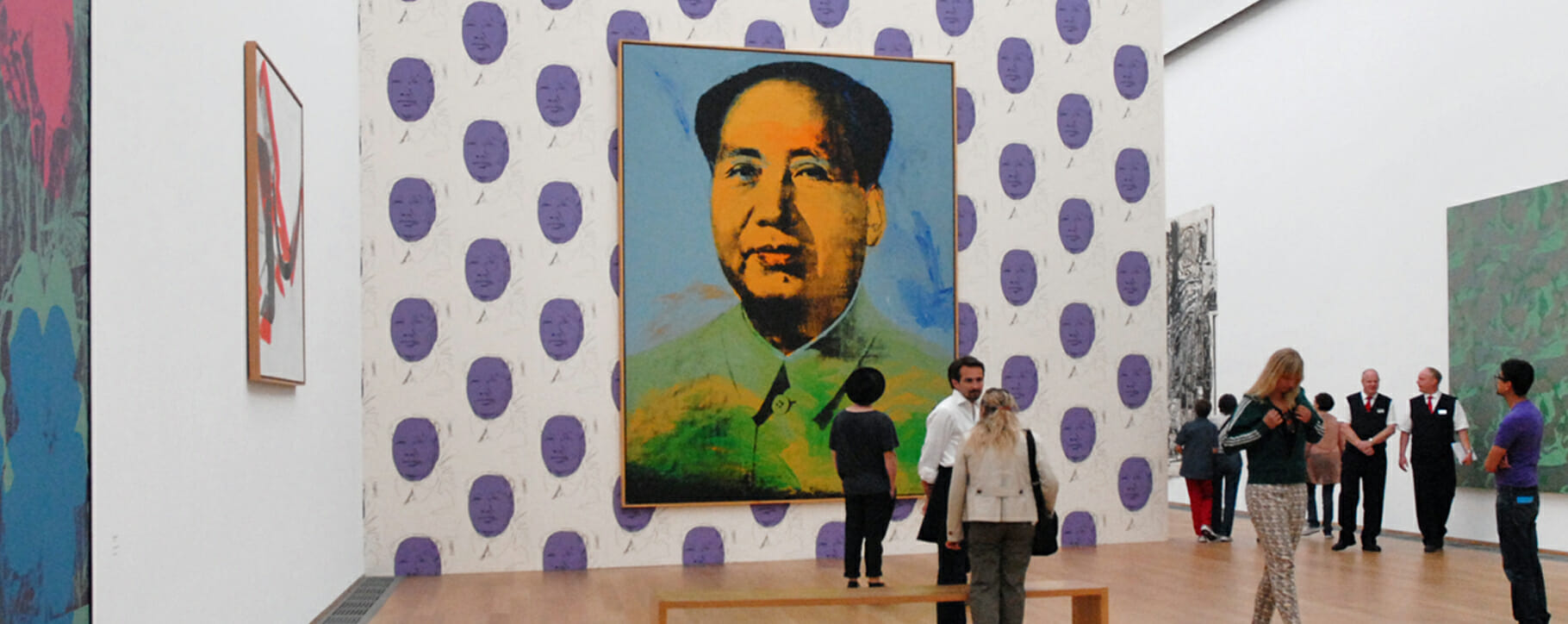 Above: a large Andy Warhol screenprint of Chairman Mao on display in a gallery
Above: a large Andy Warhol screenprint of Chairman Mao on display in a gallery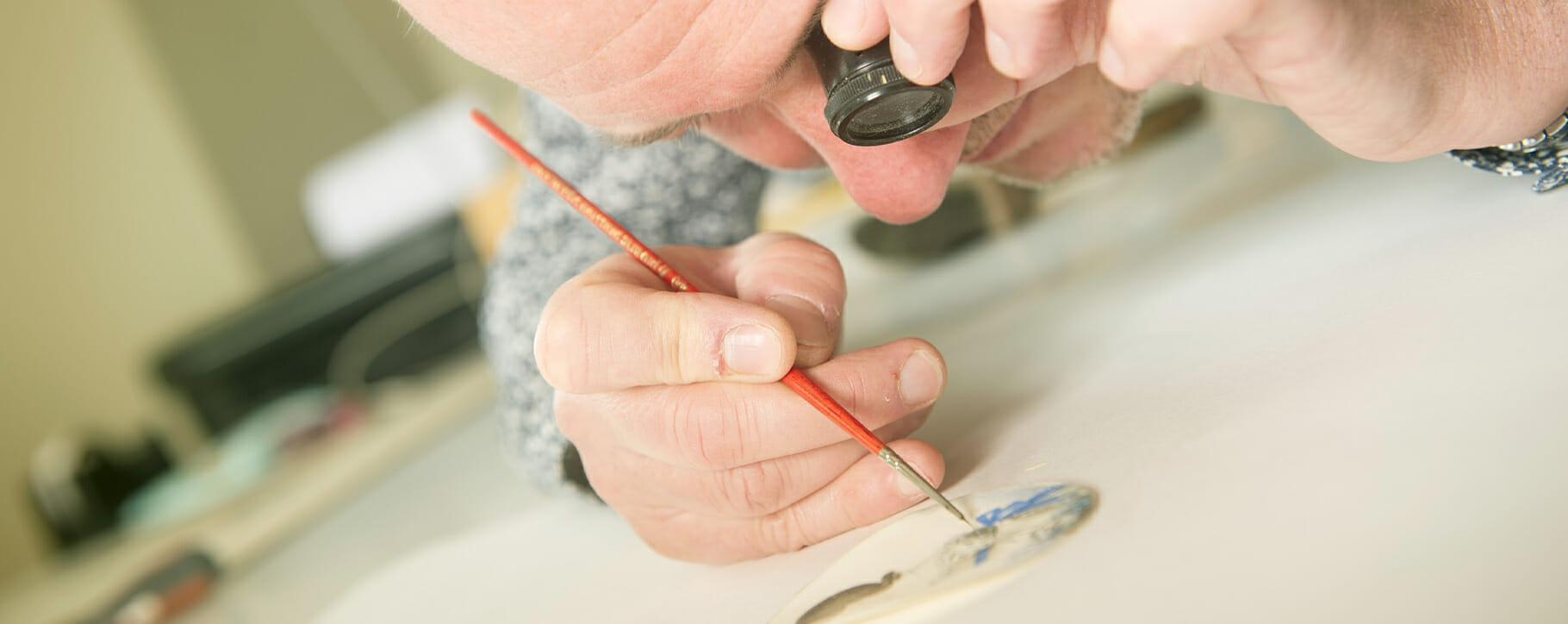 Above: our ICON accredited paper conservator James working on a miniature watercolour
Above: our ICON accredited paper conservator James working on a miniature watercolour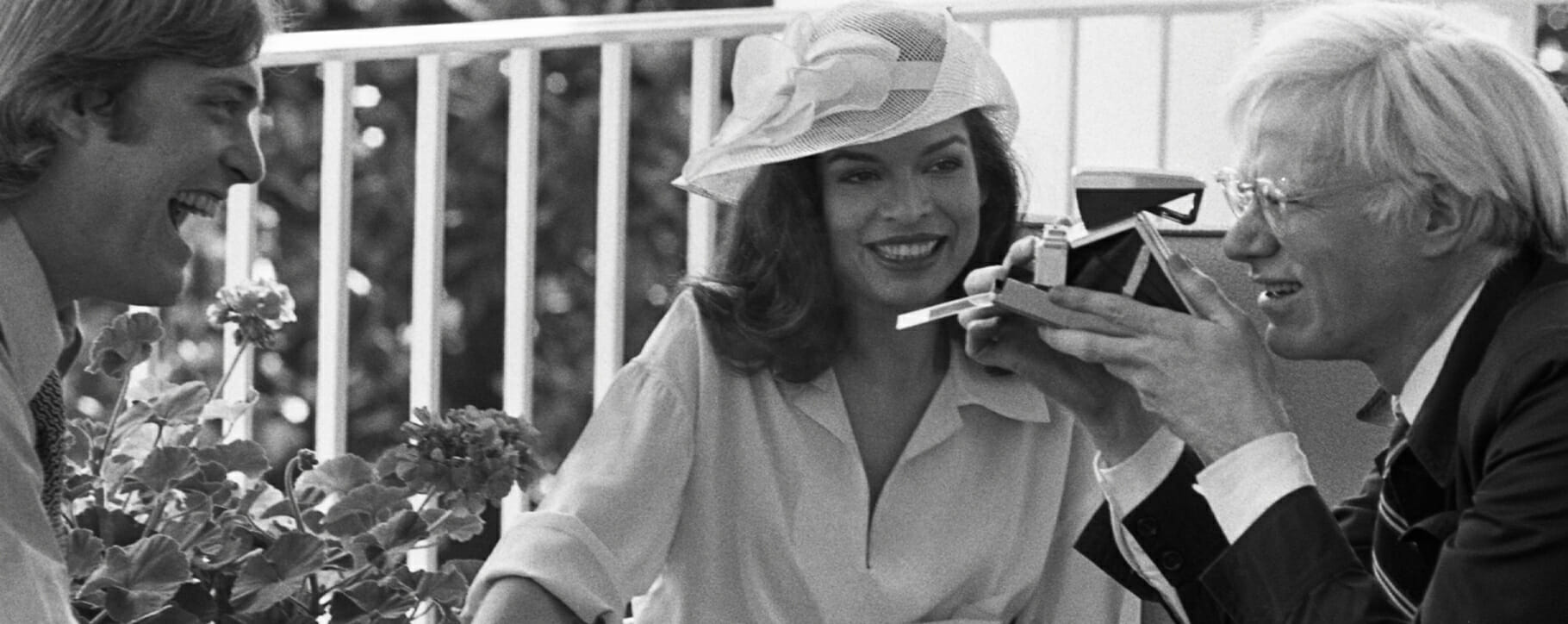 Above: Warhol photographing Jack Ford and Bianca Jagger, 1975
Above: Warhol photographing Jack Ford and Bianca Jagger, 1975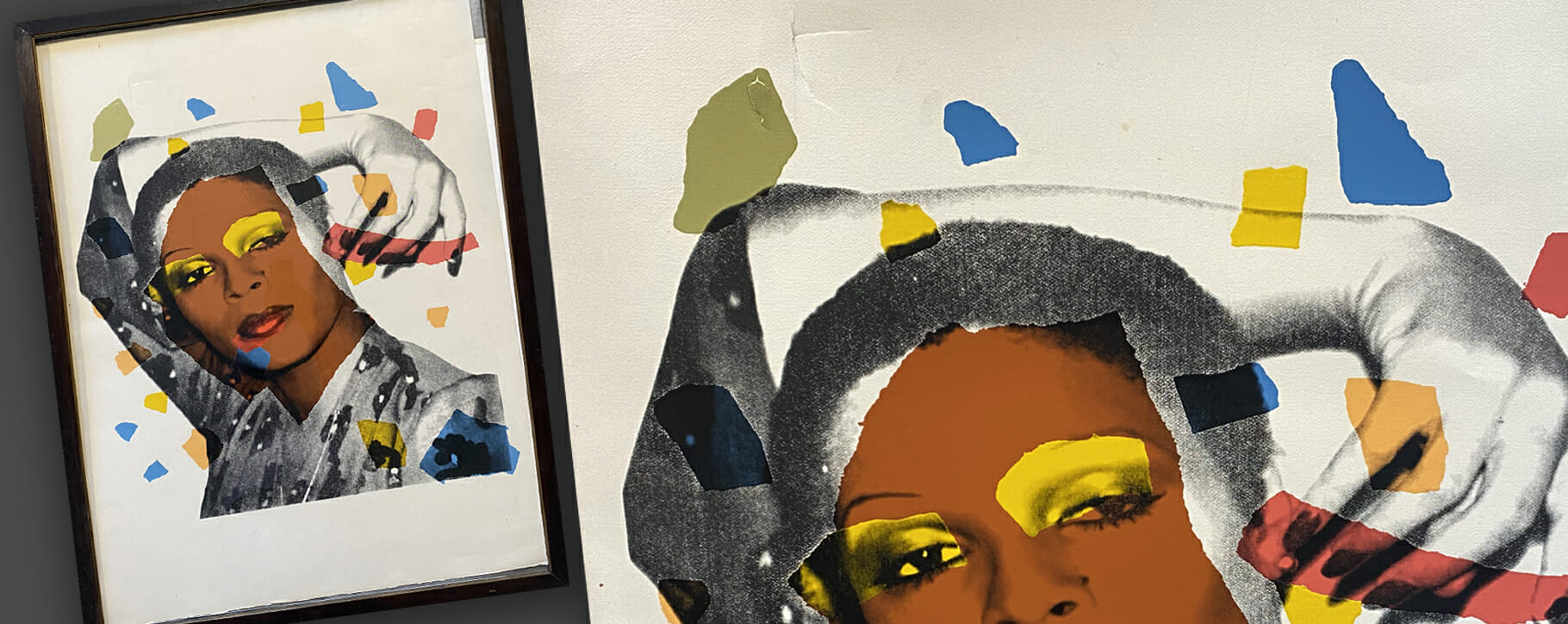 Above: a close up of the dent in the Andy Warhol print before restoration by our paper conservator
Above: a close up of the dent in the Andy Warhol print before restoration by our paper conservator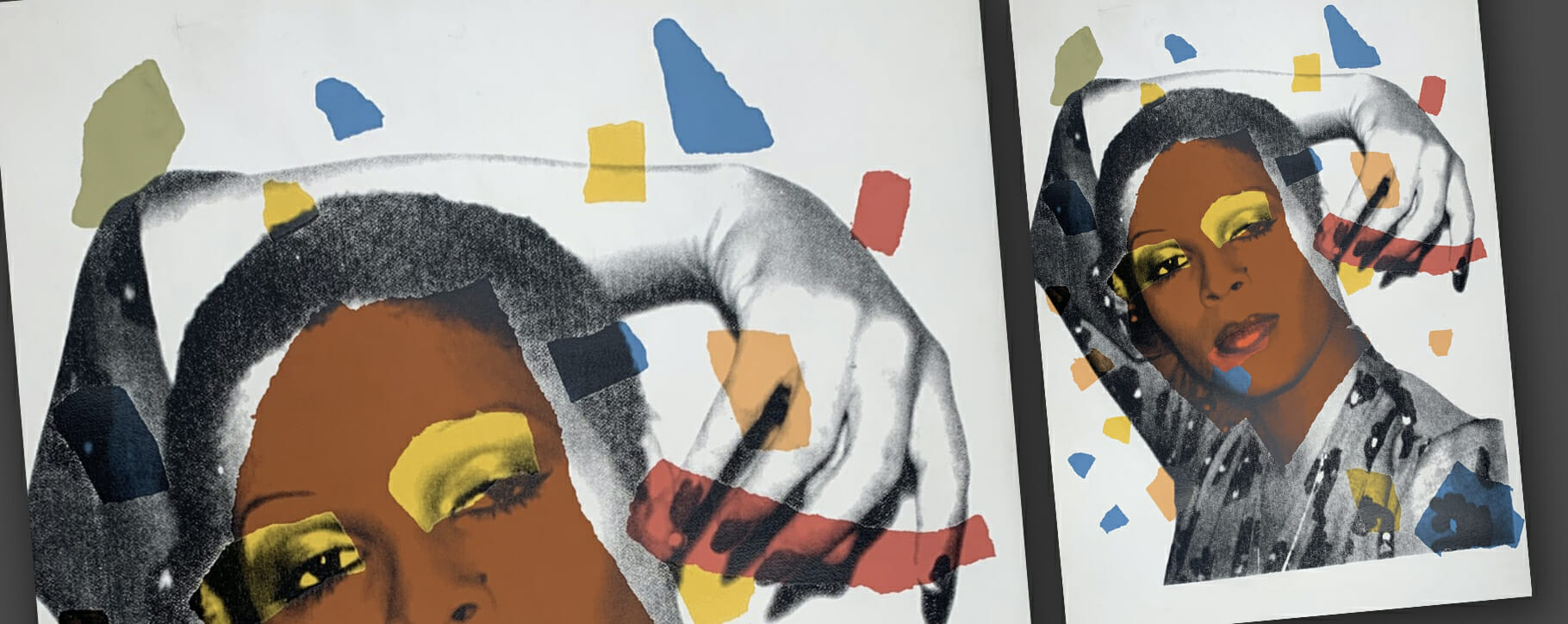 Above: a close up of the dent in the Andy Warhol print after restoration by our paper conservator
Above: a close up of the dent in the Andy Warhol print after restoration by our paper conservator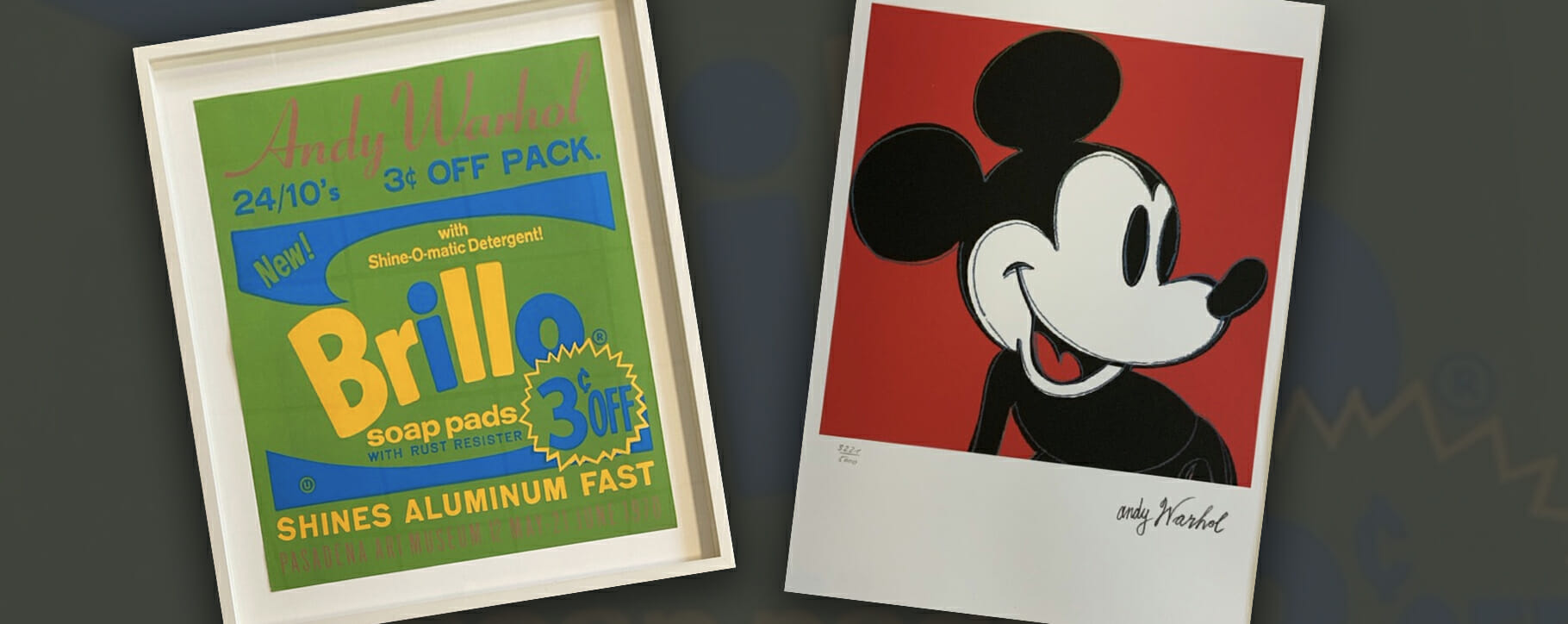 Above: two Andy Warhol pieces which our paper conservator has worked on, including a Warhol Brillo print and Mickey Mouse print with autograph
Above: two Andy Warhol pieces which our paper conservator has worked on, including a Warhol Brillo print and Mickey Mouse print with autograph




